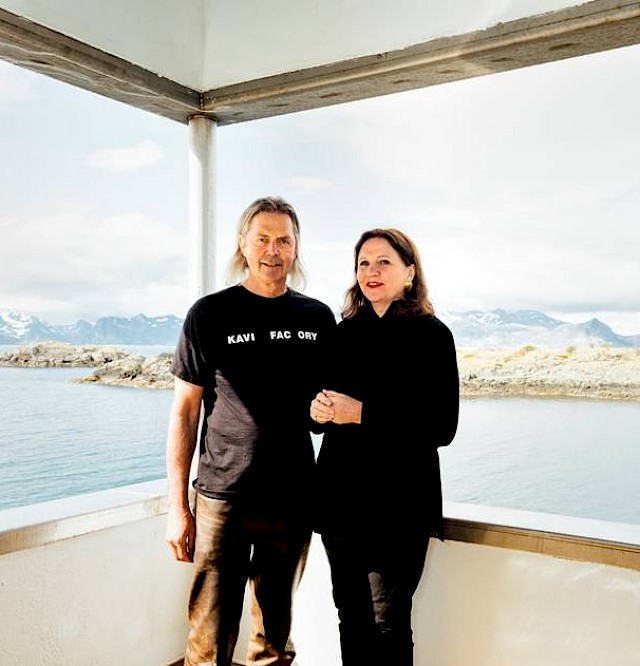BMW Art Guide by Independent Collectors
Venke & Rolf Hoff
KaviarFactory – Lofoten, Norway

What was the first piece of artwork you purchased, and when was this?
It was at the beginning of 1970 when I was still a teenager. They were prints by a Norwegian artist.
Why do you collect?
That’s a very good question – and I do not know! In a way I have always been collecting. It must run through veins. I spent a lot of time with my grandparents and their walls were crowded with art, antique furniture and lots of different old interesting “things”. I have also been collecting stamps, coins, antique Norwegian furniture, ancient Spanish candlesticks, but what I love most about collecting is the “hunt”. Looking, traveling and searching for a piece. Now my wife and I are almost only collecting contemporary art. After realizing that I am getting older, I find that art keeps me younger – it keeps me going, it challenges me and it gives me a lot of energy. A good excuse to continue collecting, I think. Wouldn’t you agree?


Does your collection follow a concept or a specific theme?
No it does not. It has always been spontaneous. However, if I am looking back and see through all works and artists, there is some sort of line, but I never think about this when purchasing a work. What grabs me is the “thing” – these “things” are not always very conventional and that is why I stick to contemporary art.
Do you have a personal relationship with the artist you collect?
Yes, we do have a personal relation with many of the artists. Some are also good friends with our two kids as they grew up with a lot of these artists around the kitchen table.
Why did you decide to make your collection publicly accessible?
We never really meant for it to happen – it just happened. We bought an old kaviar factory in Lofoten, behind the Artic circle about seven years ago. Just to save this building, as this space is very far from Oslo, about a two day drive. In this area of Norway there is almost no contemporary art of high quality, so part of the crazy idea was to show and “teach” the population in this area about contemporary art and what is going on around the world, outside of this part of Norway. Every autumn my wife Venke looks after, speaks and shows around about 400-500 students from the local schools around Lofoten. This is really fantastic. We also make one exhibition a year where the whole family is included.

Which publicly accessible private collection would you recommend visiting?
“La Fabrique”, Josee & Marc Gensollen Collection, Marseille. It's a very personal collection and they are a great couple. Real art lovers lead by their heart!
All images courtesy KaviarFactory, Lofoten
More Information on KaviarFactory